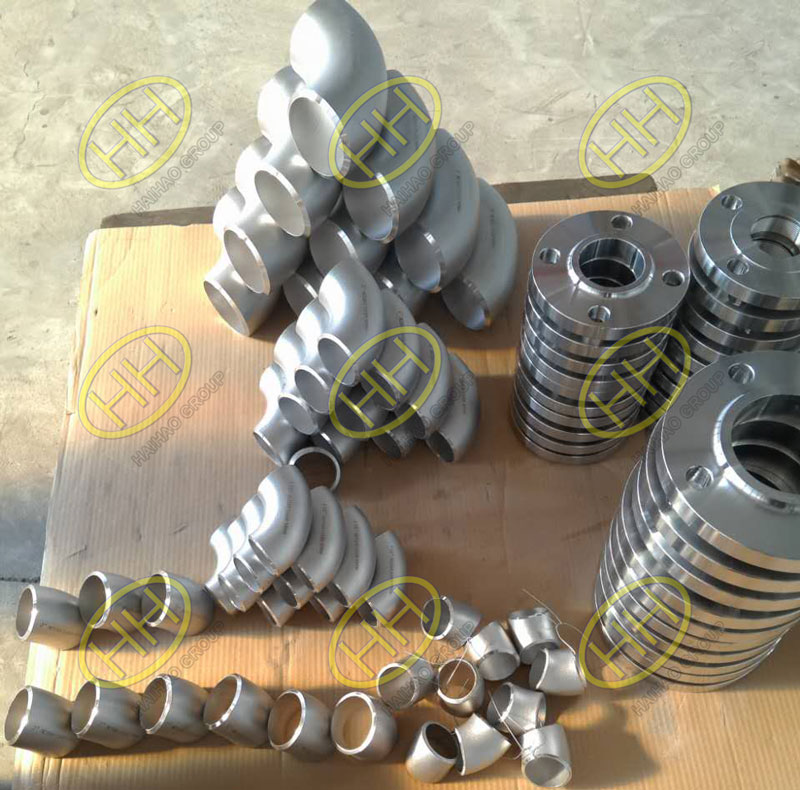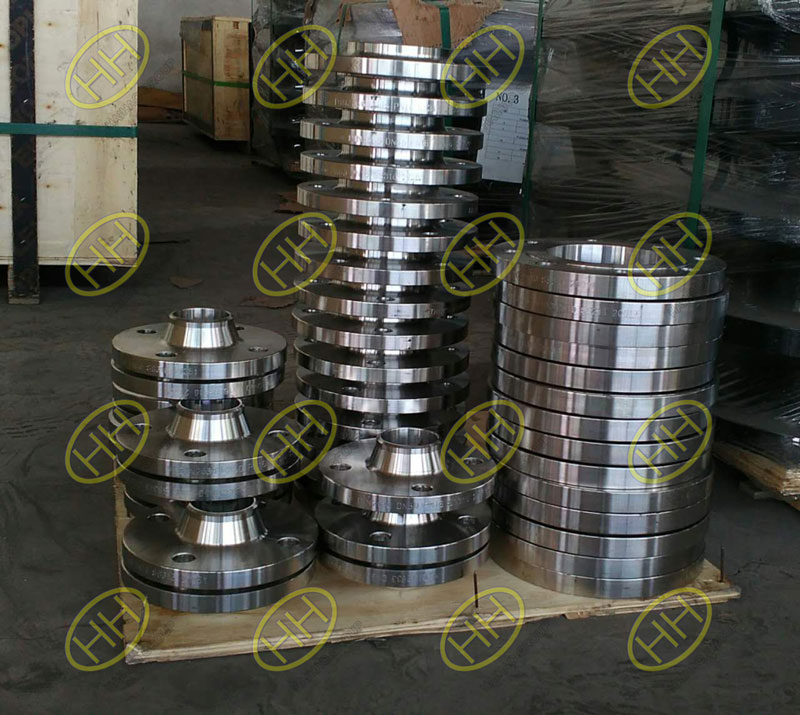How to process the surface of stainless steel forgings?
Stainless steel has excellent characteristics such as unique strength,high abrasion resistance,superior anticorrosive performance,and resistance to rust.Therefore,it is widely used in chemical industry,food machinery,mechanical and electrical industry,environmental protection industry,home appliance industry,home decoration and finishing industry,giving people a gorgeous and noble feeling.
The application development prospect of stainless steel will be more and more broad,but the application development of stainless steel largely determines the development degree of its surface treatment technology.So as a professional supplier of stainless steel flanges and fittings,today I will introduce the following aspects of common stainless steel surface treatment technologies.

stainless steel 45 degree and 90 deree butt welding elbows
1.Introduction of stainless steel varieties
1.1 The main components of stainless steel: generally contain chromium (Cr),nickel (Ni),molybdenum (Mo),titanium (Ti) and other high quality metal elements.
1.2 Common stainless steel: chrome stainless steel, containing Cr≥12% or more; nickel-chromium stainless steel,containing Cr≥18%, containing Ni≥12%.
1.3 Classification from the metallographic structure of stainless steel: austenitic stainless steel and martensitic stainless steel.Generally called non-magnetic stainless steel and magnetic stainless steel.
2.Common stainless steel surface treatment methods
At present,there are varieties of treatment methods for stainless steel surfaces: ① the surface is whitened; ② the surface is brightened; ③ the surface is colored.
2.1 Surface natural whitening treatment: During the processing of stainless steel, after rolling, edging, welding or artificial surface fire baking and heating treatment, black oxide scale is produced. This hard gray-black oxide scale is mainly composed of two EO4 components, NiCr2O4 and NiF. In the past, hydrofluoric acid and nitric acid were generally used to remove strong corrosion. However, this method is costly, pollutes the environment, is harmful to the human body, and is relatively corrosive, and is gradually eliminated. At present, there are two main methods for treating scale:
(1)Sand blasting (pellet) method: The method of spraying micro glass beads is mainly used to remove the black oxide scale on the surface.
(2)Chemical method: use a non-pollution pickling passivation paste and non-toxic cleaning solution with inorganic additives at room temperature for dipping. So as to achieve the purpose of whitening stainless steel. After processing, it basically looks a dull color. This method is more suitable for large and complex products.

Stainless steel SS316 weld neck flanges and slip on flanges
2.2 Mirror surface treatment of stainless steel: According to the complexity of stainless steel products and different requirements of users, mechanical polishing, chemical polishing, electrochemical polishing and other methods can be used to achieve mirror gloss. The advantages and disadvantages of these three methods are as follows:
Mechanical polishing has good leveling, high brightness labor intensity, serious pollution, difficult to process complex parts, reduced gloss, high investment and cost for simple workpieces, medium and small products, complex parts cannot be processed. The gloss of the entire product cannot be consistent, and the gloss is maintained. not long time
Chemical polishing has less investment, complex parts can be thrown, high efficiency, fast speed, insufficient brightness, polishing liquid to be heated, gas overflow, complex products requiring ventilation equipment, and products with low brightness requirements can be processed in small batches.
Electro-chemical polishing achieves mirror gloss, long-term maintenance, stable process, less pollution, low cost, good anti-pollution, large one-time investment, complex tools need to be equipped with tooling, auxiliary electrodes, mass production must be cooled, high-end small and medium-sized products, requires long Keep the mirror bright product process stable, easy to operate, can be widely used.

Stainless steel ERW pipe
2.3 Surface coloring treatment: Stainless steel coloring not only gives stainless steel products a variety of colors, increases the variety of product colors, but also improves the wear resistance and corrosion resistance of the product.
There are several methods for coloring stainless steel: (1) chemical oxidation coloring method; (2) electrochemical oxidation coloring method; (3) ion deposition oxide coloring method; (4) high temperature oxidation coloring method; (5) gas phase cracking coloring method. A brief overview of the various methods is as follows:
(1)Chemical oxidation coloring method: It is the color of the film formed by chemical oxidation in a specific solution. There are dichromate method, mixed sodium salt method, sulfuration method, acid oxidation method and alkaline oxidation method. Generally, the “Inco method” (INCO) is used more, but to ensure the uniform color of a batch of products, a reference electrode must be used to control it.
(2)Electrochemical coloring method: It is the color of the film formed by electrochemical oxidation in a specific solution.
(3)Chemical method of ion-deposited oxide coloring method: Put the stainless steel workpiece in vacuum coating machine for vacuum evaporation plating. For example: titanium-plated watch cases and watch straps are generally golden yellow. This method is suitable for high-volume product processing. Because of the large investment and high cost, small batch products are not cost-effective.
(4)High temperature oxidation coloring method: It is to immerse the workpiece in a certain molten salt and keep it at a certain process parameter, so that the workpiece forms an oxide film with a certain thickness and presents various colors.
(5)Gaseous pyrolysis and coloring method: It is more complicated and less used in industry.
3.processing method selection
Which method is used for stainless steel surface treatment should be selected according to the product structure, material, and different requirements of the surface.
As a professional flange supplier,Haihao Group not only supply stainless steel flanges but also carbon steel flange,alloy steel flanges.We supply the products in different specifications,standards,materials.If you want to know more about our products,please feel free to contact us.Email:sales@haihaogroup.com
